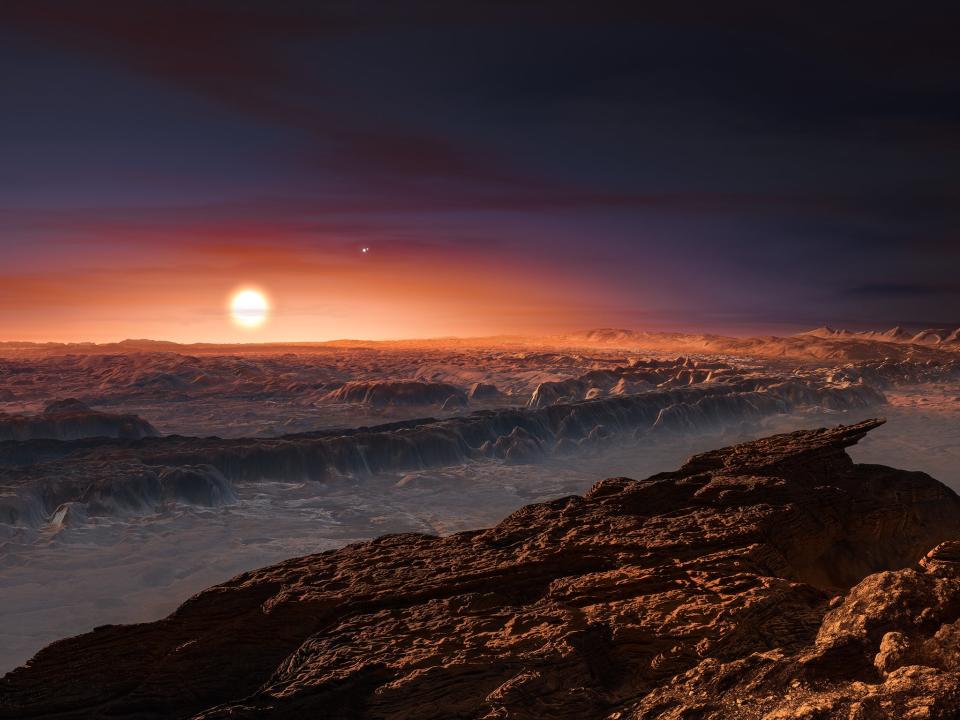There is 'an Earth' around our nearest star, scientists confirm

A planet the size of Earth has been confirmed around the closest star in our solar system, Proxima Centauri, by an international team of scientists.
The planet, called ‘Proxima b’, has a mass of 1.17 Earths and is located in the habitable zone of Proxima Centauri, which the planet orbits approximately every 11 days, according to the new paper published in the journal Astronomy & Astrophysics.
The first indications of the planet’s existence were in 2013 by Mikko Tuomi of the University of Hertfordshire from archival observation data, with continued research following in 2016. It is believed this planet could be “likely” to be able to support alien life forms.
The researchers detected this planet by measuring radial velocity using the Echelle SPectrograph for Rocky Exoplanets and Stable Spectroscopic Observations (ESPRESSO) which is installed on a telescope in Chile. It is three times as accurate as HARPS, another spectrograph which has been used to measure the velocity of Proxima Centauri.
Radial velocity, in relation to a given point, is the rate of change of the distance between an object and that point. As a planet orbits a star, its gravitational pull causes a star to move back and forth. This tiny motion shifts the observed light spectrum of the star slightly due to Doppler shift, which can be detected with sensitive instruments.
A low disturbance in Proxima Centauri’s speed, detected by ESPRESSO, tipped researchers off to the presence of the planet. Nobel Prize-winning astrophysicist Michel Mayor said that ESPRESSO makes it possible to “measure the mass of the planet with a precision of over one-tenth of the mass of Earth”, which he describes as “completely unheard of".
Proxima Centauri is approximately 4.2 light-years from the Sun, but Nasa estimates it would take approximately 73,000 years for us to reach the planet unless new technologies are developed.
Ionic propulsion, nuclear thermal propulsion, nuclear pulse propulsion, fusion rockets, and laser sails have all been considered as methods to travel to the planet.
“We were already very happy with the performance of HARPS, which has been responsible for discovering hundreds of exoplanets over the last 17 years,” said Francesco Pepe, a professor in the Astronomy Department in UNIGE’s Faculty of Science in a statement. “We’re really pleased that ESPRESSO can produce even better measurements, and it’s gratifying and just reward for the teamwork lasting nearly 10 years.”
Alejandro Suarez Mascareño, the article’s main author, said: “Confirming the existence of Proxima b was an important task, and it’s one of the most interesting planets known in the solar neighbourhood.”
Although Proxima b is about 20 times closer to its star than the Earth is to the Sun, it receives comparable amounts of energy. If there is liquid form on the planet, it could harbour life, but researchers said there is still much to be done before that can be confirmed.
“Is there an atmosphere that protects the planet from these deadly rays?” said Christophe Lovis, a researcher in the University of Geneva’s Astronomy Department, “and if this atmosphere exists, does it contain the chemical elements that promote the development of life?”
It is also possible that there could be a second planet orbiting the star, as the research team found evidence of a second signal in the data – but was unable to determine its origins.
“If the signal was planetary in origin, this potential other planet accompanying Proxima b would have a mass less than one third of the mass of the Earth. It would then be the smallest planet ever measured using the radial velocity method,” said Professor Pepe.
Read more
READ MORE Everything you need to know about SpaceX launch
Mysterious signals coming from space answer matter puzzle
30 years of space wonder began with a vital but underwhelming image
Space Force launch: Robotic rocket plane blasts off on secret mission
Astronomers find 'regular rhythms' coming from distant stars
Space debris from failed rocket misses New York City by minutes

